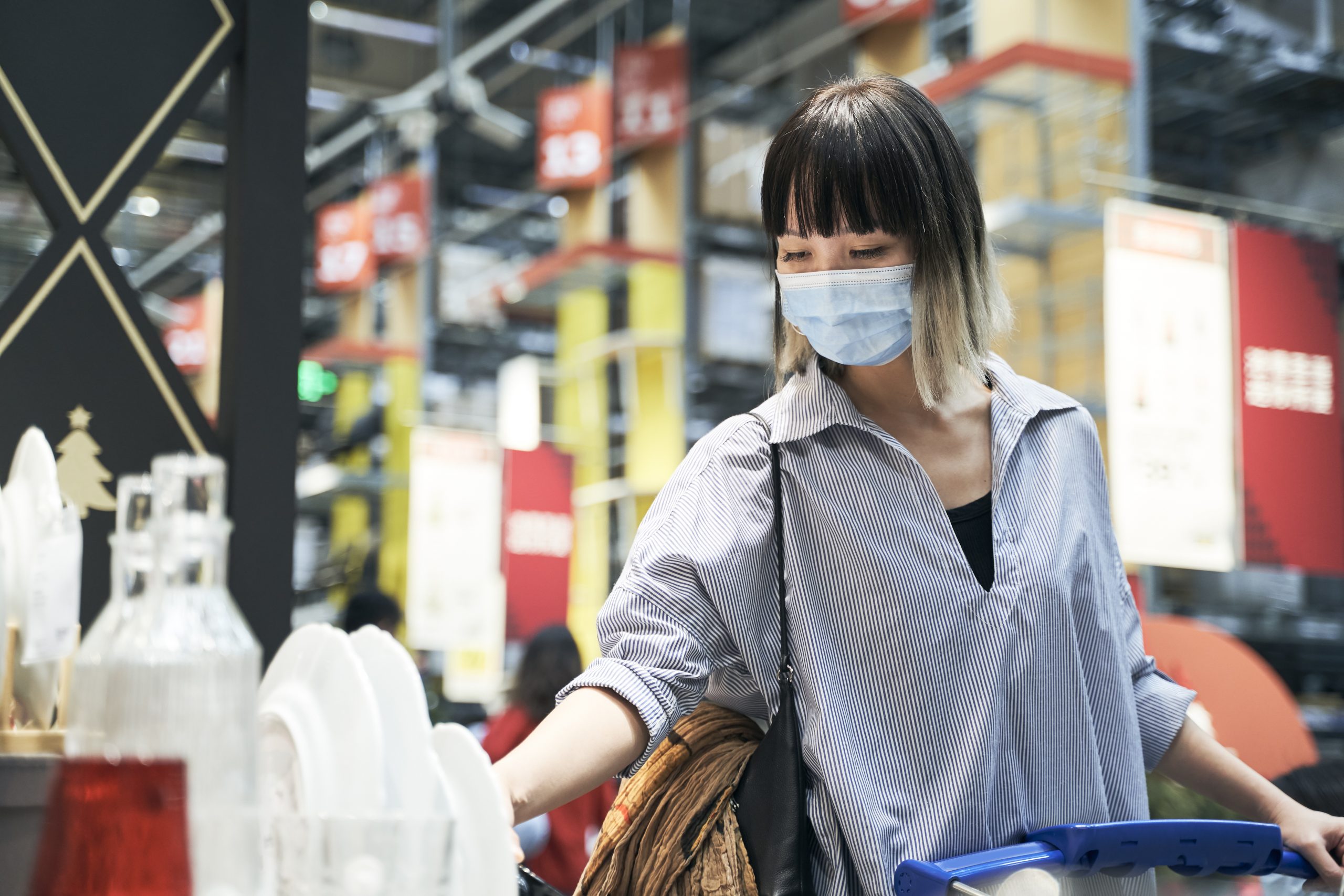Are consumers already returning to stores?
When consumers were asked about their current in-person retail activity, only 7% said that they were not shopping in stores at all. When asked the same question at the height of the first wave of the pandemic in April 2020, 11% of consumers were avoiding stores.
Q: Are you currently buying products by visiting stores?
Of all the markets we surveyed, a higher percentage of consumers in the UK were not visiting stores than any other country, although this could be related to different lockdown regulations limiting the number and types of stores that were permitted to be open at the time the survey was carried out. Consumers in the UK were also the least likely to be making payments using cash, with only 22% saying they were currently doing so.
Q: Are you currently buying products by visiting stores?
One particular note is the continued growth of order ahead and curbside pickup as a solution for consumers and retailers. Overall, 9% of consumers are only interacting with retailers this way currently, which is especially popular in the US, Canada, Germany, and the UK.
Will consumer retail spending return to pre-COVID-19 levels?
When considering the frequency that consumers visit in-store retailers, only a small percentage of consumers (12%) have already returned to their pre-COVID-19 levels of activity. However, this is higher in the US (17%) and Bulgaria (17%). Again, lockdown regulations at the time the survey was carried out may be a factor here.
Projecting into the future, nearly half (48%) of consumers say they are already or plan to shop in stores as frequently as pre-COVID-19, and this percentage is lowest in the UK (40%). Overall, 44% of consumers plan to reduce their spending in stores compared to pre-COVID-19, but only 9% say they plan to shop online only in the future. This figure spikes in the US (15%) and is significantly lower in Germany (6%) and Austria (4%).
11% of consumers in both Germany and Austria plan to shop in stores more frequently in the future than they did before COVID-19.
Will the rollout of vaccines shift the needle on in-store shopping?
One of the most significant societal elements that has the potential to impact whether consumers return to stores in the short-to-medium term are national vaccination programs. Overall, 57% of consumers have connected their amount of in-store retail activity to the vaccine rollout, and this is significantly higher in Italy (67%) and Germany (64%). Bulgaria is a significant outlier here; only 36% of consumers are limiting their visits to stores until they have been vaccinated.
Will different approaches to the checkout impact where consumers shop?
In addition to altering the volume of in-store spending they plan to do, consumers are also considering switching the retailers they shop with due to the experience they have in the store. This is particularly true when it comes to the experience they have at the checkout.
This is already having an impact. 43% of consumers noticed which in-store retailers had, and had not, made efforts to upgrade their checkout process in reaction to the pandemic and 28% felt that businesses did not react quickly enough to make the checkout safer for customers during that time.
The consequences of this are clear. Almost a third (31%) of consumers have already changed their preferred stores due to different approaches to customer safety at the checkout and an even higher percentage (39%) are now less likely to shop in stores that haven’t adapted their checkout process to make it safer for customers.
The ease of checking out is a concern for many, with 38% reporting that the speed of checking out is more important to them now than it was pre-COVID-19. Offering both cash and contactless payments also remains critical for different minorities of customers. A quarter (24%) of consumers will no longer shop in stores that do not offer contactless payments, and a slightly higher percentage (28%) refuse to shop in stores that are no longer accepting cash.
The future of in-store retail hasn’t arrived yet
While speed and convenience are important for consumers, new types of frictionless checkout are still receiving mixed reviews. Many consumers don’t know enough about them to have an opinion, and of those that do many remain unconvinced of the benefits.
Evolutions in new checkout technology and accelerated roadmaps to frictionless checkout may be on the agenda for many retailers, especially in light of the aforementioned consumer appetite for quicker and easier in-store payments. However, there is a wide spectrum of opinion when it comes to alternatives to the traditional checkout, and many consumers still appear to need convincing that frictionless is better.
When asked to evaluate frictionless checkouts, smartphone apps that process payments in lieu of a physical transaction, and QR codes that can be scanned by a smartphone that is then redirected to an online checkout, consumer opinion is surprisingly similar across the board. Approximately one third of consumers see the convenience benefits of these alternatives checkout technologies and would use them if they were available, but of this group almost half have concerns about the security of their transactions. About one quarter of consumers would not use these technologies due to either security concerns or because they prefer traditional checkouts, and slight over a quarter of consumers do not know enough about the technology to make an informed decision about whether they would use it. The remainder see no benefits to these technologies over a traditional checkout but have no concerns either.
What about other in-person activities?
In addition to retail, consumers were also asked about their attitudes to other in-person activities, generally following the legal restrictions preventing them from operating. There is a severe concern for many businesses that appetite for physical and out-of-home experiences have been replaced by digital or at-home alternatives that have become popular during the lockdown, either because consumers are too concerned about safety to venture out or that they now prefer the “new normal” user experience. A fall in demand could be devastating for many businesses.
Across the board, approximately a third of all consumers did confirm that they planned to reduce their volume of out-of-home activities. But this is offset to a degree by a healthy percentage of consumers that plan to increase the amount of out-of-home activities they do compared to before the pandemic. This may go some way to quelling the fears of businesses that are sceptical of being able to recover following the pandemic due to deflated demand for their services.
Article Credit https://www.paysafe.com/





